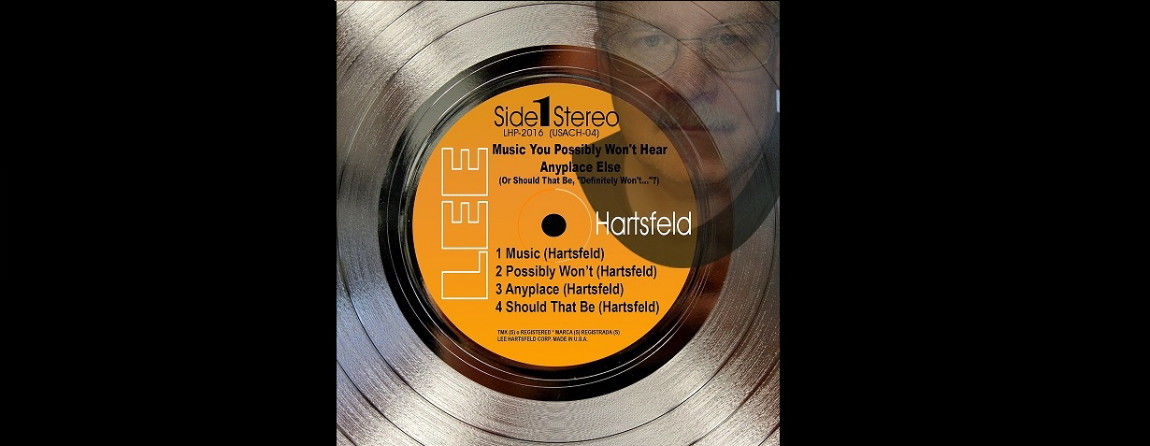I promised to get to Sammy Kaye (and, yes, musicman1979--it's his contribution to the twist-ploitation craze), and I will, but for today we have a light concert (aka, light music) post, all of the selections ripped from 12-inch 78s in my collection and spanning the years from (let's see) 1934 to 1946.
We start with the four selections (!) of the two-disc Andre Kostelanetz set, Exotic Music (1946), whose standout track is the roots-of-exotica selection Lotus Land, composed by Cyril Scott in 1905. From the liner notes:
"Lotus Land finds its story in the Odyssey of Homer. During the ten years of tribulation which he spent returning from the siege of Troy, Odysseus braved and overcame many perils, some fierce and aggressive, others latent and passive, but just as deadly. One of these periods awaited him in the land of the Lotus-eaters. Whoever stopped here and ate of the lotus flower would at once forget all thoughts of home and duty and remain on to live in dreamy indolence. This peril, successfully defied by Odysseus, is pictured with wonderful realism in this impressionistic music. The languid, dulled ease, the meaninglessness of time, the fatal beauty of the flower, are all richly embroidered in this tonal tapestry."
Debussy Lite, in other words. And I wish there had been at least two additional numbers, but maybe they ran out of studio time? ("I thought we were booked till 4 pm. Okay, we'll clear out.")
The other three titles are fine, even if lacking in conventional "exotica" feeling, as that term is applied to Esquivel, Les Baxter, et al.
Then, Eric Coates' London Suite, played by the London Philharmonic Orch., as conducted by the composer, on a 1937 Masterworks single, the A and B sides combined into one file. The individual sections are Covent Garden (Tarantella), Westminster (Meditation), and Knightsbridge (March). Note the ingenious treatments of the bell chime ("Westminster Quarters"). This is joyful and skillfully constructed light fare--the epitome of a "Pops" selection. The audio is exceptional.
Andre Kostelanetz returns with the famous Warsaw Concerto, penned by Richard Addinsell for the 1941 movie, Suicide Squadron. Kosty must have recorded this somewhere other than in his usual studio, given the rather muffled highs (which I restored). This isn't the usual distant-mic AK sound, but I don't suppose that would have worked for such a dynamic number. I'm pretty sure the year is 1946. Wish I knew who did the ivory tickling.
Next, Paul Whiteman conducting his 1934 Concert Orchestra in two famous "symphonic jazz" works, both of which yielded highly successful pop songs: Park Avenue Fantasy ("Stairway to the Stars"), and Deep Purple ("Deep Purple" [what else?]." The scoring is by Roy Bargy and (probably) Irving Szathmary, respectively. The pianist is Dana Suesse. Some gramophone-soundbox wear in the loud closing passages for both, but with only minor distortion.
And we wrap up with even more Andre: The 1944
"Oklahoma!" Medley. We're back to the classic easy listening/mood music acoustics we associate with Kosty. Wish I had arranger information--the scoring really sells the wonderful Hammerstein II-Rodgers numbers. It's too bad that much music of this sort/era (the kind of popular instrumental fare common to 1930s and 1940s radio broadcasts) has come to be perceived as "Muzak"--as that brand name is generically used, that is. A style which, for a time, entered the "Music to (name of activity) By" category during the 1950s. Music to study by, read by, date by, knock over convenience stores by, etc. As this 12-inch single demonstrates, it was, often as not, music worthy of full and admiring attention.
Click here to hear: Light Music Festival--Andre Kostelanetz, London Philharmonic Orch., Paul Whiteman Concert Orch.
Andre Kostelanetz and His Orch. (Columbia Masterworks MX-264, 1946)
Flamingo (Grouya)
Poinciana (Song of the Tree; Nat Simon)
Song of India (Rimsky-Korsakov)
Lotus Land (Cyril Scott)
Various
London Suite (Covent Garden, Westminster, Knightsbridge)--London Philharmonic Orch., c. Eric Coates, 1937
Warsaw Concerto (Richard Addinsell)--Andre Kostelanetz and His Orch., 1946
Park Avenue Fantasy (Matt Malneck-Frank Signorelli, A: Roy Bargy)--Paul Whiteman and His Concert Orch., piano: Dana Suesse, 9/11/1934
Deep Purple (Peter De Rose, A: prob. Irving Szathmary)--Same
"Oklahoma!" Medley--Andre Kostelanetz and His Orch., 1944
Lee







